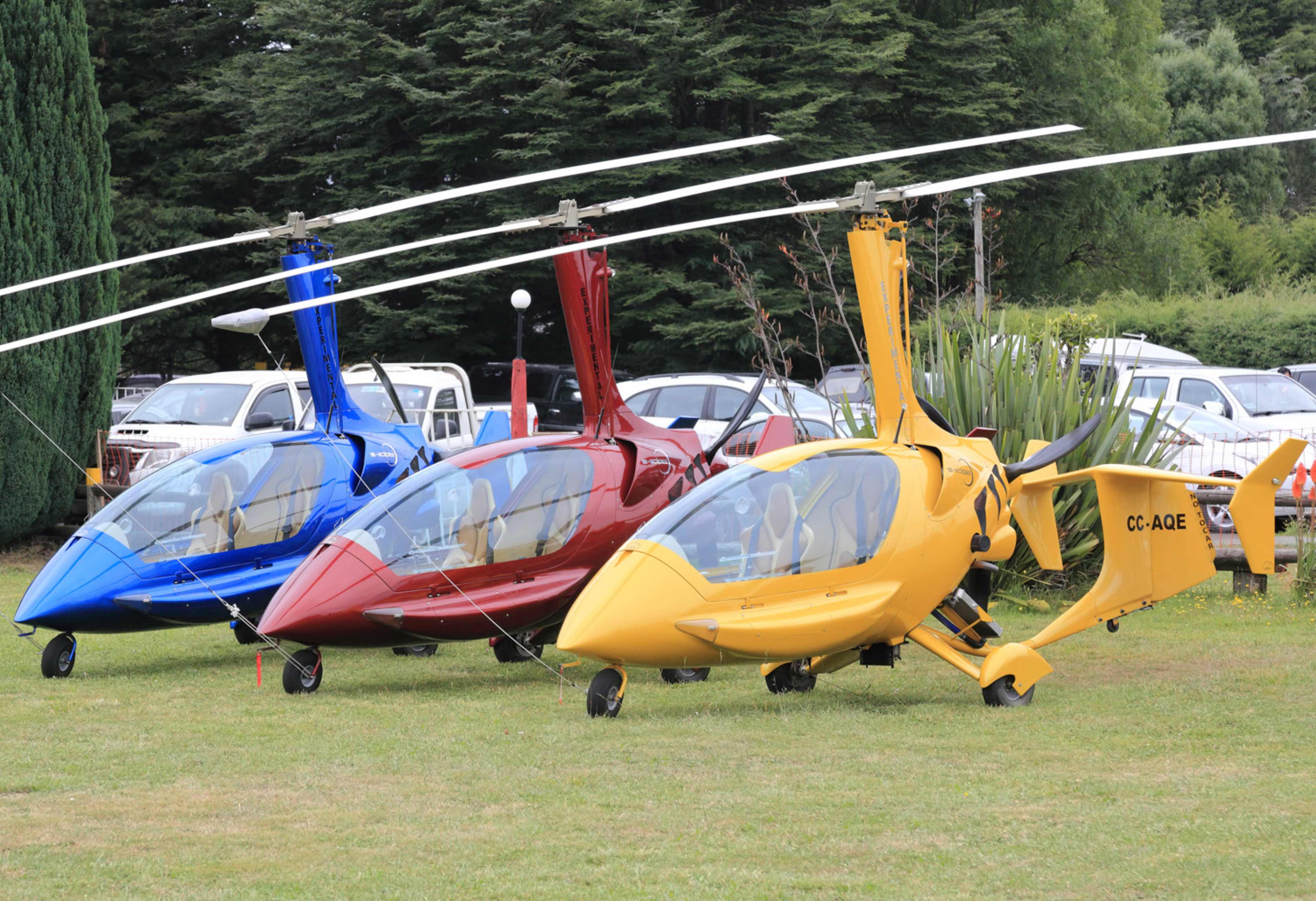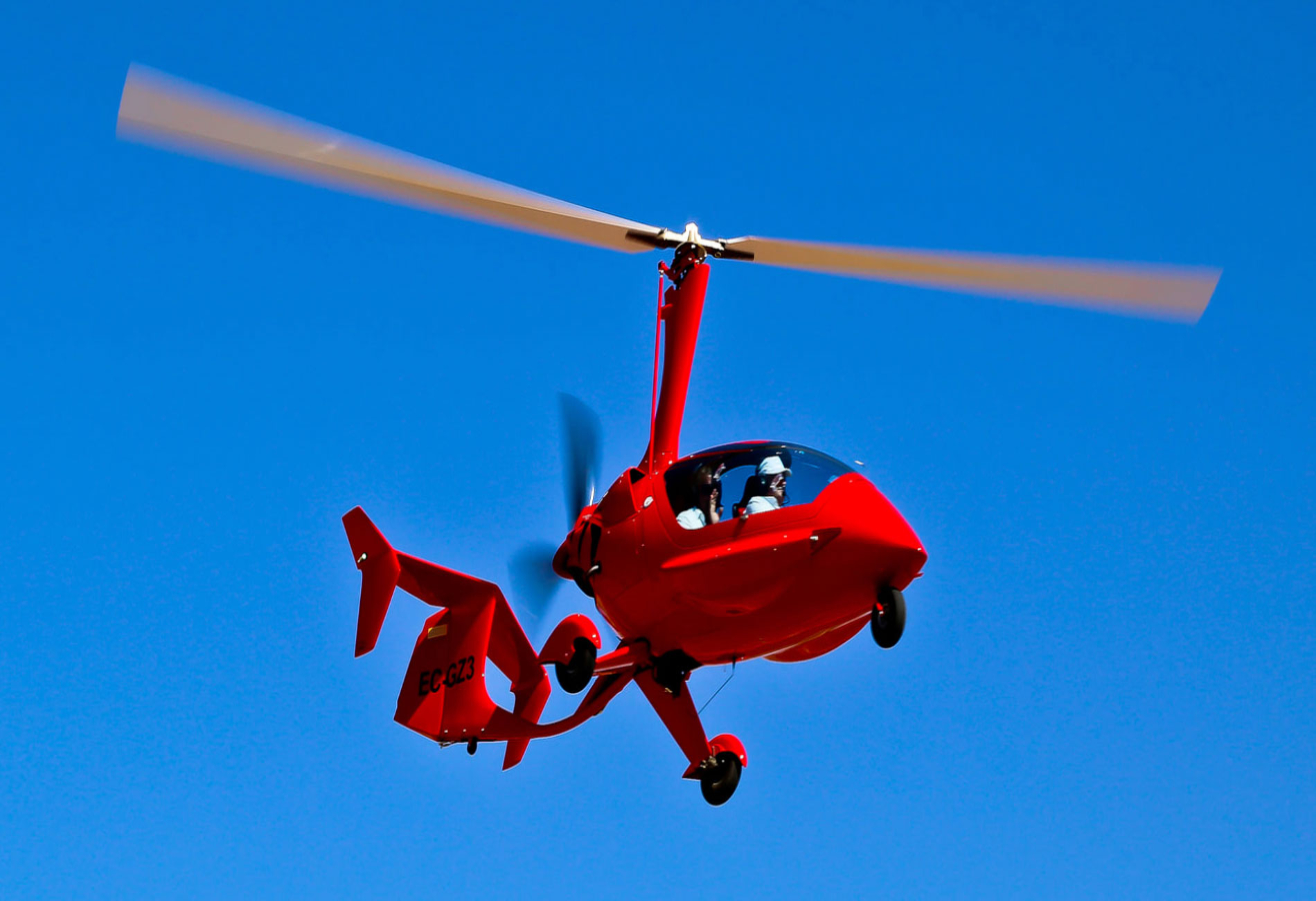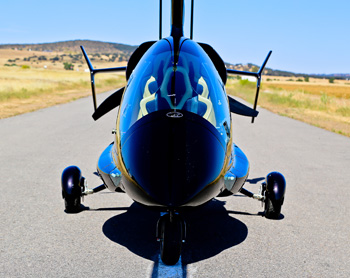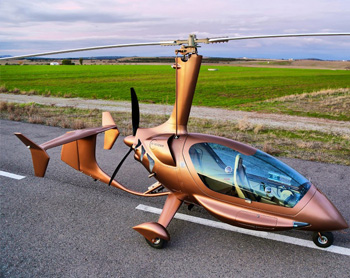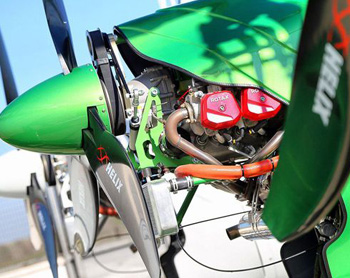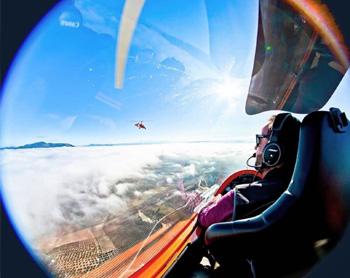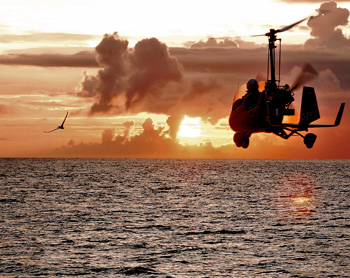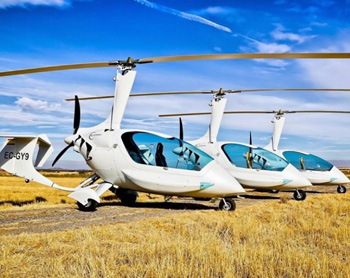Giroplano

El giroplano, también conocido como gyrocópter, es una aeronave de ala giratoria que se diferencia de los aviones convencionales en la forma en que genera sustentación. Mientras que los aviones cuentan con alas fijas, los autogiros utilizan un rotor de dos palas que gira para crear la sustentación necesaria.
El giroplano se puede considerar un híbrido entre el avión y el helicóptero. A diferencia del avión, el autogiro utiliza una hélice para la propulsión, pero en lugar de tener alas fijas, cuenta con alas rotatorias. Por otro lado, al igual que el helicóptero, el autogiro tiene alas rotatorias, pero su rotor no está conectado al motor y gira libremente en "autorrotación" impulsado por el aire, generando así la fuerza de sustentación. En contraste, en un helicóptero, tanto la propulsión como la sustentación dependen del rotor, que está impulsado por un motor y deja de generar sustentación en caso de parada.
Para que un autogiro pueda despegar, es necesario prelanzar el rotor superior, es decir, hacerlo girar antes de despegar. Esto se logra poniendo en movimiento las alas rotatorias a un número mínimo de vueltas. Una vez alcanzadas esas vueltas, el rotor se mantiene girando en "autorrotación" gracias a la acción del viento relativo, sin necesidad de una fuerza externa continua.
En los aviones, las alas generan sustentación pero requieren una velocidad mínima para mantenerse en vuelo, lo que implica que el piloto debe estar atento a la velocidad para evitar la pérdida de sustentación.
Por otro lado, los giroplanos vuelan en autorrotación, lo que significa que nunca entran en pérdida de sustentación. Incluso es posible que el piloto vuele en estacionario, es decir, sin desplazarse horizontalmente, mientras desciende.
Las alas, tanto en los aviones como en los autogiros, siguen los mismos principios de funcionamiento, pero en los autogiros la capacidad de mantener la sustentación en autorrotación evita el riesgo de pérdida de sustentación que se encuentra en los aviones convencionales.



